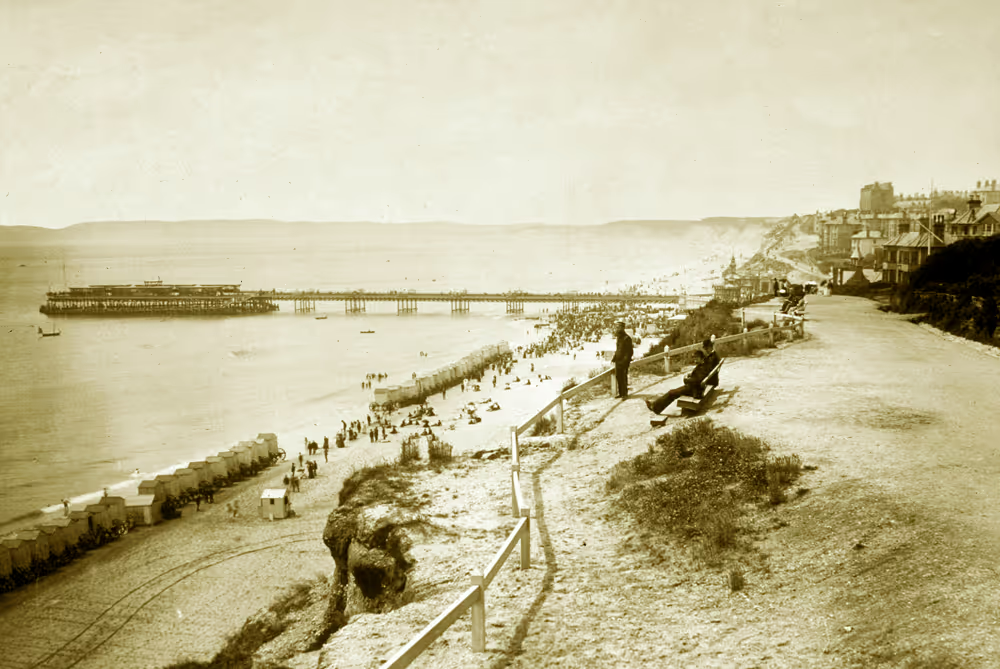Until the early 19th century, the area in which Bournemouth now stands was just heathland where cattle grazed. In 1810, Lewis Tregonwell, regarded as the first inhabitant and founder of Bournemouth, visited the beach with his wife. She loved the area and persuaded him to build a house there. He purchased 8 1/2 acres and built a house with cottages for his butler and gardener.
Tregonwell later bought more land in the area and landowners planted pines on the heath, but there was no settlement at Bournemouth until 1837.
At the end of the 18th century, spending time at the seaside became very popular among the rich and middle classes. Many new resorts were built, including Brighton, Eastbourne, and Bognor Regis. In 1836, Sir George Tapps-Gervis decided to create a seaside resort at Bournemouth. He appointed an architect from Christchurch called Ben Ferrey to design it. Villas were built for families to hire during the summer.
By 1840 a little village had been built in Bournemouth. In that year, the stagecoach, which travelled from Southampton to Weymouth, began to call at Bournemouth, a sure sign that the village was beginning to establish itself. The same year, a guidebook for the resort was published.
Tapps-Gervis died in 1842, but the building work carried on and by 1851, the first shops had appeared in Commercial Road. Bournemouth was still a little village with a population of only 695, but it was growing rapidly and by 1861, Bournemouth had risen to 1,707.
Bournemouth Police Force was founded in 1856 and local government began in the same year when an Act of Parliament set up a body of men responsible for paving, cleaning, and lighting the streets. They also had the power to provide sewers and drains.
In 1864, the town gained gas street lighting and in 1866, a piped water supply was installed. A volunteer fire brigade was formed in 1870 and the improvement commissioners were replaced by a mayor and aldermen in 1890.
Bournemouth's famous pier started life as a little wooden jetty in 1855. In 1861 a wooden pier was built, and was then replaced in 1880 by an iron version.
The railway reached Bournemouth in 1870, which made it far easier for people to travel to the resort and increased the number of visitors. Victorian Bournemouth grew at a phenomenal rate. By 1881, the population stood at 16,859 and, ten years later, had more than doubled, as it reached 37,000 in 1891.
In 1877, Red House was built by the Prince of Wales for Lillie Langtry. Then, in 1885, the Mont Dore Hotel was built. It was supposed to be a health resort where guests were given spring water from the Auvergne. In 1921, it was turned into the Town Hall.
The 1870s saw the Winter Gardens and Pleasure Gardens laid out and Bournemouth Arcade had sprung up by this time too.
Villages near Bournemouth were now growing rapidly and, in 1876, Boscombe and Springbourne were made part of the town.
Boscombe Pier was built in 1889 and it got its own railway station in 1897.
In 1884, the boundaries of Bournemouth were extended again to include Westbourne.








